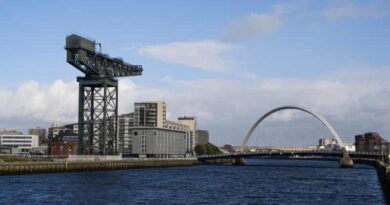Glasgow Cathedral: A Symbol of Scotland’s History
The History of Glasgow Cathedral
Glasgow Cathedral is one of the most iconic landmarks in Scotland, and its history dates back over 900 years. The cathedral is dedicated to Saint Mungo, the patron saint of Glasgow, and it is the seat of the Archbishop of Glasgow.
Early history
The first church on the site of Glasgow Cathedral was founded by Saint Mungo in the 6th century. The church was initially made of wood, but it was rebuilt in stone in the 12th century. The new cathedral was consecrated in 1136, and it was one of the largest and most impressive cathedrals in Scotland.
Medieval period
This Cathedral was a major center of religious and cultural life in Scotland during the Middle Ages. The cathedral was home to a large community of canons and priests, and it was also a popular pilgrimage destination. The cathedral was also the site of many important events in Scottish history, including the coronation of Robert II in 1371.
Reformation
The Scottish Reformation had a significant impact on Glasgow-Cathedral. In 1560, the cathedral was attacked by a mob of Protestants, and many of its statues and religious artifacts were destroyed. The cathedral was also closed to worship for several years.
Post-Reformation
After the Reformation, Glasgow Cathedral was reopened to worship as a Protestant church. However, the cathedral continued to be damaged by neglect and vandalism. In the 18th century, the cathedral underwent a major restoration project, and it was reopened to the public in 1793.
Read More: Steaks Restaurants in Glasgow
Victorian period
During the Victorian period, This Cathedral was the site of a number of important religious and cultural events. In 1843, the cathedral hosted the Disruption of the Church of Scotland, which led to the formation of the Free Church of Scotland. The cathedral also hosted the General Assembly of the Church of Scotland in 1847, which was the first General Assembly to be held in this Cathedral since 1560.
20th century
Glasgow Cathedral continued to be an important religious and cultural center in the 20th century. In 1936, the cathedral celebrated its 900th anniversary. The cathedral also hosted the visit of Pope John Paul II in 1982.
21st century
Today, this Cathedral is one of the most popular tourist attractions in Scotland. The cathedral is also a thriving religious community, and it hosts a variety of services and events throughout the year.
Architecture
Glasgow Cathedral is a fine example of Gothic architecture. The cathedral is built in the shape of a cross, and it has a nave, two aisles, a transept, and a choir. The cathedral also has a number of chapels, including the Chapel of St. Mungo, which is the site of his tomb.
Interior
The interior of Glasgow Cathedral is decorated with a number of important works of art, including the tomb of Bishop Jocelyn, the tomb of Archbishop William Rae, and the stained glass windows.
Significance
Glasgow Cathedral is one of the most important historical and cultural landmarks in Scotland. The cathedral is a symbol of the city’s long and rich history, and it is a popular tourist destination for people from all over the world.
Conclusion
Glasgow-Cathedral is a magnificent building with a rich history. It is a place of worship, a tourist destination, and a symbol of the city of Glasgow. If you are visiting Glasgow, be sure to visit Cathedral to learn more about its history and to see its stunning architecture.





Pingback: Top 10 Cheap Car Insurance Companies UK | Glainsights
Pingback: Glasgow Hidden Cultural Gems: The Ultimate Museum Guide
Pingback: Cultural Icons: The Significance of Edinburgh Castle in Scotland